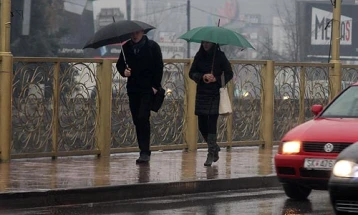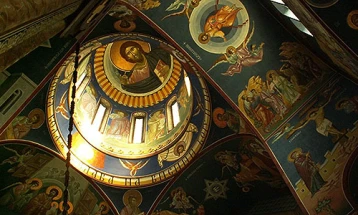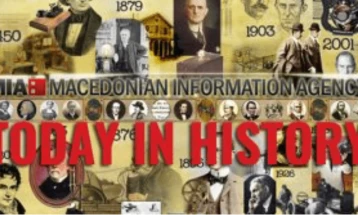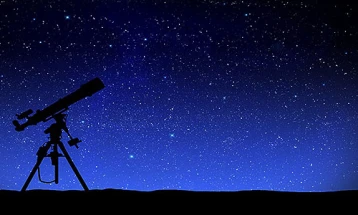Today in history
- 1096 – People’s Crusade: The Turkish army successfully fight off the People’s Army of the West.
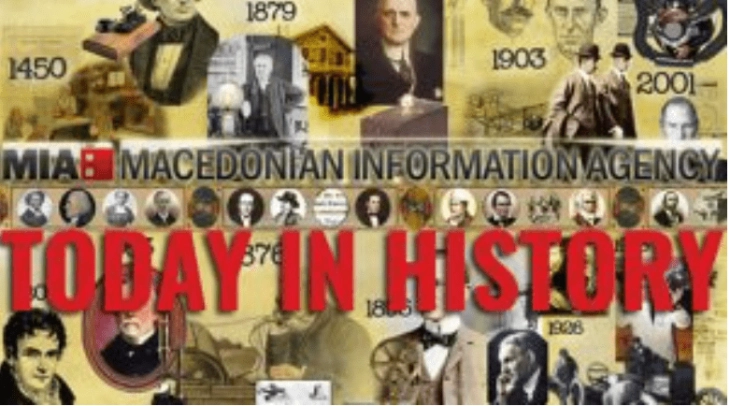
21 October 2023 (MIA)
1096 – People’s Crusade: The Turkish army successfully fight off the People’s Army of the West.
1097 – First Crusade: Crusaders led by Godfrey of Bouillon, Bohemund of Taranto, and Raymond IV, Count of Toulouse, begin the Siege of Antioch.
1209 – Otto IV is crowned emperor of the Holy Roman Empire by Pope Innocent III.
1392 – Nanboku-chō, Japan: Emperor Go-Kameyama abdicates in favor of rival claimant Go-Komatsu.
1512 – Martin Luther joins the theological faculty of the University of Wittenberg.
1520 – Ferdinand Magellan discovers a strait now known as Strait of Magellan.
1520 – João Álvares Fagundes discovers the islands of Saint Pierre and Miquelon, bestowing them their original name of “Islands of the 11,000 Virgins”.
1600 – Tokugawa Ieyasu defeats the leaders of rival Japanese clans in the Battle of Sekigahara, which marks the beginning of the Tokugawa shogunate.
1774 – First display of the word “Liberty” on a flag, raised by colonists in Taunton, Massachusetts in defiance of British rule in Colonial America.
1797 – In Boston Harbor, the 44-gun United States Navy frigate USS Constitution is launched.
1805 – Napoleonic Wars: Battle of Trafalgar: A British fleet led by Vice Admiral Lord Nelson defeats a combined French and Spanish fleet under Admiral Villeneuve.
1816 – The Penang Free School is founded in George Town, Penang, Malaysia, by the Rev Hutchings, the oldest English-language school in Southeast Asia.
1824 – Joseph Aspdin patents Portland cement.
1854 – Florence Nightingale and a staff of 38 nurses are sent to the Crimean War.
1861 – American Civil War: Battle of Ball’s Bluff: Union forces under Colonel Edward Baker are defeated by Confederate troops in the second major battle of the war.
1867 – The Medicine Lodge Treaty is signed by southern Great Plains Indian leaders. The treaty requires Native American Plains tribes to relocate to a reservation in western Oklahoma.
1879 – Thomas Edison invents the first commercially practical incandescent light bulb.
1888 – Foundation of the Swiss Social Democratic Party.
1892 – Opening ceremonies for the World’s Columbian Exposition are held in Chicago, though because construction was behind schedule, the exposition did not open until May 1, 1893.
1895 – The Republic of Formosa collapses as Japanese forces invade.
1910 – HMS Niobe arrives in Halifax Harbour to become the first ship of the Royal Canadian Navy.
1912 – First Balkan War: Kardzhali is liberated by Bulgarian forces.
1921 – President Warren G. Harding delivers the first speech by a sitting U.S. President against lynching in the deep South.
1931 – The Sakurakai, a secret society in the Imperial Japanese Army, launches an abortive coup d’état attempt.
1940 – The first edition of the Ernest Hemingway novel For Whom the Bell Tolls is published.
1943 – The Provisional Government of Free India is formally declared by Subhas Chandra Bose.
1944 – World War II: The first kamikaze attack. A Japanese fighter plane carrying a 200-kilogram (440 lb) bomb attacks HMAS Australia off Leyte Island, as the Battle of Leyte Gulf began.
1944 – World War II: Nemmersdorf massacre against the German civilians takes place.
1944 – World War II: Battle of Aachen: The city of Aachen falls to American forces after three weeks of fighting, making it the first German city to fall to the Allies.
1945 – Women’s suffrage: Women are allowed to vote in France for the first time.
1950 – Korean War: Heavy fighting begins between British and Australian forces from the 27th British Commonwealth Brigade and the North Korean 239th Regiment during the Battle of Yongju.
1956 – Mau Mau Uprising: Kenyan rebel leader Dedan Kimathi is captured by the British Army, signalling the ultimate defeat of the rebellion, and essentially ending the British military campaign.
1959 – In New York City, the Solomon R. Guggenheim Museum, designed by Frank Lloyd Wright, opens to the public.
1959 – U.S. President Dwight D. Eisenhower signs an executive order transferring Wernher von Braun and other German scientists from the United States Army to NASA.
1965 – Comet Ikeya–Seki approaches perihelion, passing 450,000 kilometers (279,617 miles) from the sun.
1966 – Aberfan disaster: A colliery spoil tip collapses on the village of Aberfan in Wales, killing 144 people, mostly schoolchildren.
1967 – Vietnam War: More than 100,000 war protesters gather in Washington, D.C.. Similar demonstrations occur simultaneously in Japan and Western Europe.
1969 – A coup d’état in Somalia brings Siad Barre to power and establishes a socialist republic in Somalia.
1971 – A gas explosion kills 22 people at a shopping center in Clarkston, East Renfrewshire, near Glasgow, Scotland.
1973 – Fred Dryer of the Los Angeles Rams becomes the first player in NFL history to score two safeties in the same game.
1978 – Australian civilian pilot Frederick Valentich vanishes in a Cessna 182 over the Bass Strait south of Melbourne, after reporting contact with an unidentified aircraft.
1979 – Moshe Dayan resigns from the Israeli government because of strong disagreements with Prime Minister Menachem Begin over policy towards the Arabs.
1981 – Andreas Papandreou becomes Prime Minister of Greece, ending an almost 50-year-long system of power dominated by conservative forces.
1983 – The metre is defined at the seventeenth General Conference on Weights and Measures as the distance light travels in a vacuum in 1/299,792,458 of a second.
1986 – In Lebanon, pro-Iran kidnappers claim to have abducted American writer Edward Tracy (he is released in August 1991).
1987 – Jaffna hospital massacre is carried out by Indian Peace Keeping Force in Sri Lanka killing 70 ethnic Tamil patients, doctors and nurses.
1994 – North Korea nuclear weapons program: North Korea and the United States sign an Agreed Framework that requires North Korea to stop its nuclear weapons program and agree to inspections.
1994 – In Seoul, 32 people are killed when the Seongsu Bridge collapses.
2005 – Images of the dwarf planet Eris are taken and subsequently used in documenting its discovery by the team of Michael E. Brown, Chad Trujillo, and David L. Rabinowitz.

